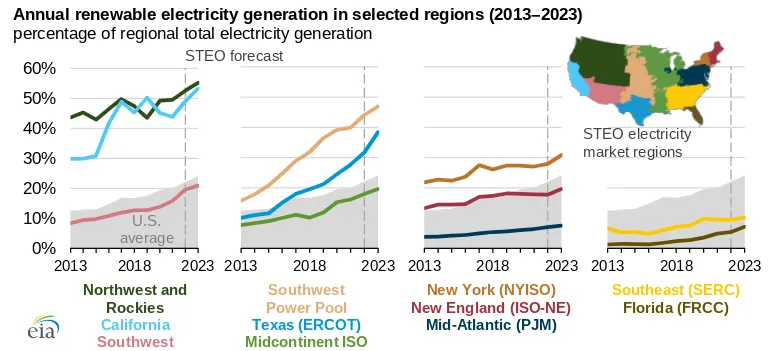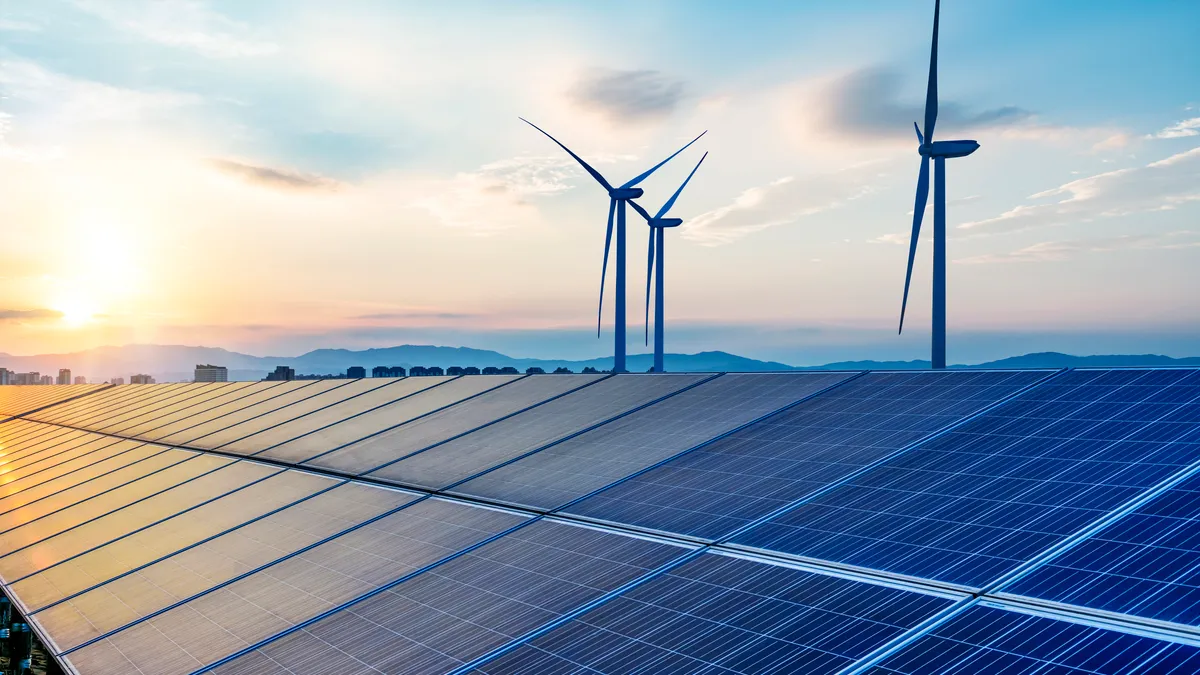Dive Brief:
- Renewable energy developers added 5,722 MW of wind in the first half this year, down from 7,157 MW in the same period in 2021, while solar additions fell to 3,895 MW from 5,714 MW in the first six months last year, according to the Federal Energy Regulatory Commission.
- Looking ahead, there is 66,315 MW of “high probability” solar additions set to come online over the next three years, starting last month, FERC said in its monthly infrastructure report, released Aug. 9. There is 17,383 MW of high probability wind for the same period, according to the agency.
- Meanwhile, the Energy Information Administration expects renewable energy, including hydropower, will account for 22% of the electricity produced in the United States this year, up from 17% in 2017. Renewable production will grow to 24% in 2023, the agency said in a forecast released Tuesday.
Dive Insight:
The FERC and EIA reports indicate that while renewable energy additions have slowed this year, solar and wind will make up a growing portion of U.S. power production.
The reports don’t reflect any near-term boost the Inflation Reduction Act, signed into law on Tuesday, will provide to renewable development.
The FERC data shows how the U.S. energy mix is changing. Coal-fired power plants make up 17.7% of all U.S. generating capacity, down from 23.9% five years ago. Nuclear capacity accounts for 8.2% of all capacity, down from 9.1%, and hydro capacity is down to 8% from 8.5% since mid-2017.
Wind farms make up 11.2% of U.S. generating capacity, up from 7.2% five years ago, and solar capacity has grown to 5.9% from 2.3% in that period, according to FERC. Gas-fired capacity has inched up to a 44.2% share from 43.4% in the last five years.
FERC expects some of those trends to continue with about 22,226 MW of coal-fired generation slated to retire in the next three years, starting last month.
On the natural gas front, FERC said there is 21,743 MW of high probability gas-fired generation set to start operating in the next three years, with about 17,400 MW retiring in that period.
Meanwhile, the EIA highlighted a dearth of renewable generation in three regions: the PJM Interconnection, the Southeast and the Florida Reliability Coordinating Council.
“In each of these regions, we expect the renewable share of electricity generation to remain below half of the national average through 2023,” the EIA said. “Natural gas and nuclear sources provide most of the electricity generation in the Southeast and Florida. In PJM, the prevalent generation sources have been natural gas and coal.”

The Southwest Power Pool has had the most growth in the renewable share of electricity generation in the past decade, largely driven by wind generation, the EIA said. Last year, renewables, mainly wind, accounted for 40% of the power production in the SPP footprint, up from 13% in 2013, according to the agency, which expects renewable production to grow to 44% this year.
Renewable energy production in the Electric Reliability Council of Texas increased to a 32% share this year from 10% in 2013, the agency said.














